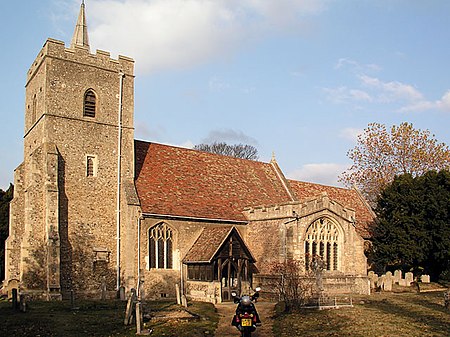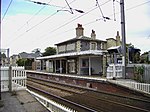Little Shelford
Civil parishes in CambridgeshireSouth Cambridgeshire DistrictVillages in Cambridgeshire

Little Shelford is a village located to the south of Cambridge, in the county of Cambridgeshire, in eastern England. The River Granta lies between it and the larger village of Great Shelford, and both are served by Shelford railway station, which is on the West Anglia Main Line from Cambridge to London Liverpool Street. The village has one pub, The Navigator, on the High Street. The parish is mostly low-lying. It is bounded on the west by the M11 motorway and by field boundaries, and on the east by the River Cam or Granta. The highest point of the parish is Clunch Pit Hill, 31 m (TL447499).
Excerpt from the Wikipedia article Little Shelford (License: CC BY-SA 3.0, Authors, Images).Little Shelford
Hauxton Road, South Cambridgeshire
Geographical coordinates (GPS) Address Nearby Places Show on map
Geographical coordinates (GPS)
| Latitude | Longitude |
|---|---|
| N 52.14267 ° | E 0.1191 ° |
Address
Hauxton Road
Hauxton Road
CB22 5HH South Cambridgeshire
England, United Kingdom
Open on Google Maps










